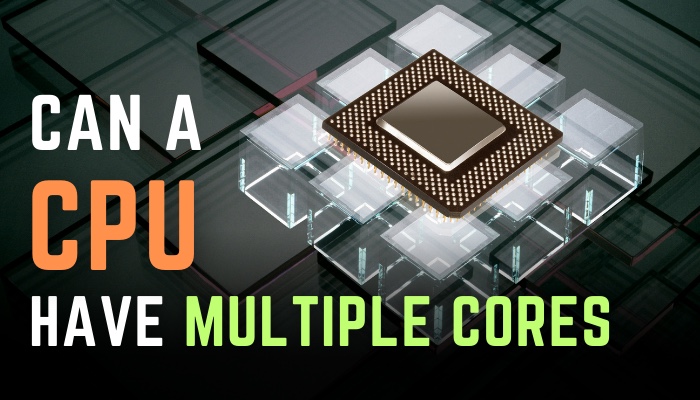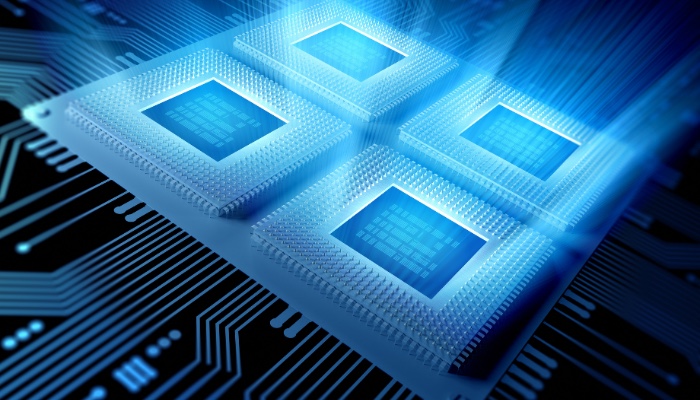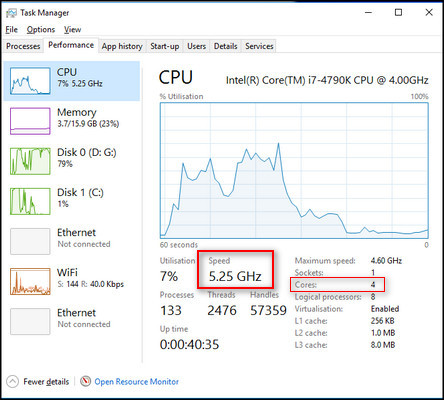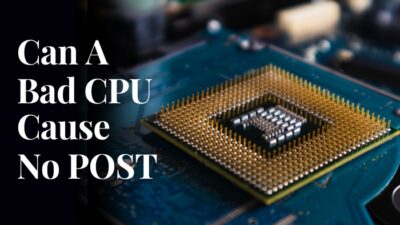If you are a new member of the tech world, you must know that the processor is the brain of a computer.
When the debate about the CPU starts, the first question you may come up with is whether a CPU has more than one core in its system.
In this article, I will cover this question. Moreover, I will discuss how a multicore processor works and its advantages & disadvantages.
So, tag along.
Can a Processor Have Multiple Cores?
In short, yes, a processor can have multiple cores. All modern CPUs have more than one core. A multicore processor can perform numerous tasks simultaneously without any difficulty. It also can process data more efficiently and quickly than a single-core CPU.
If it is more than one, like 4-core or 8-core, it’s good news for you. It’s because your CPU will be able to execute several instructions at the same time, and the overall performance of the CPU won’t hamper.
For example, let’s say you have an Intel Core i7-11700K processor on your PC. It has eight cores. It means the processor can execute up to eight threads or tasks at once. With this CPU, you can stream any HD video, play a game, and browse the internet without having performance issues.
Moreover, having numerous cores is advantageous for highly parallelizable tasks such as video encoding or rendering.
You should remember that having more cores in the CPU doesn’t guarantee that you will always get better performance.
What is a Multicore Processor & How Does It Work?
A multi-core processor is a single-chip integrated circuit with two or more processing units. When a task is given, cores communicate through cache or memory and start working on that single task. For multiple tasks, it operates on different tasks individually & independently.
Each core is a processor with its own set of registers, logic units, and cache. A single-core CPU could execute one instruction sequentially, one at a time. That’s why the PC performance was relatively slower back then.
But with the multicore CPU, the slow performance issue was resolved.

Multicore CPUs can execute different instructions simultaneously to make the PC faster and more efficient in processing.
For example, assume you have a quad-core processor and will edit a video. When you start your working process, one core will work on the video playback area, and another will work on the encoding.
The other cores will focus on rendering and exporting the video. As you can see, each core is doing different tasks at once.
But on a single core, all these tasks will be sequentially executed one at a time. That’s why multicore can complete any heavy or regular task faster than the single-core CPU.
Are you eager to learn more about CPU cores? Then read our fantastic guide from our expert: whether more cores are better in a CPU.
Is It Better to have a Higher CPU Speed or More Cores?
It’s kind of debatable which one is better than the other. More clock speed will be better if you do video editing, 3D modeling, and gaming. More cores are preferable if you run multiple applications, run some scientific simulation or operate a virtual machine.
Core and clock speed are significant factors for a CPU. You can’t neglect one aspect when you buy a new processor. You must prioritize both. But which one you will focus more on depends on the work you intend to do.
A higher clock speed CPU means that your PC can perform more instructions in a short period. If you plan to play CPU-intensive games or run applications that output data quickly, go for the high-clock speed processors.
On the other hand, having more core CPU means your processor can load many programs and calculations at once.
Multicore CPU will be an excellent choice if you are a software developer and work on a database server environment. How many cores you will need to do software-based work is on you.
As you can see, it’s totally up to you and the task you will be performing, whether you should go for more clock speed or more cores CPU.
What are the Advantages and Disadvantages of a Multi-Core CPU?
The advantage of having a multicore CPU is that it is better in overall performance, multitasking & reliability, and software interactions. But the disadvantages are that it causes complexity, generates more heat, consumes more power, and is expensive.
Everything has a positive and negative side. Multicore CPUs are no exception. Let’s see the brief details of the advantages and disadvantages of it.
Advantages of Multi-Core CPU
Here are the advantages of having a multicore processor:
1. Increase Processing Power
One of the key advantages of having a multicore processor is its processing power. If you still use a single-core CPU, you have yet to learn how fast a multicore processor operates. 
Cores can act in parallel to perform several tasks simultaneously. Together, the cores can complete any instructions in a split second. It increases productivity, and you get to experience faster PC performance.
2. Response of the System Boost Up
When you replace your old single-core CPU with a dual-core or quad-core processor, you will see that the system’s response has improved.
Mainly, it happens because of the multi-core CPU. With a dual or quad-core processor, the OS can assign tasks to different cores to complete complicated tasks quickly and efficiently. That’s why the system performance boosts.
3. Energy & Work Efficient
Each core of a multicore processor has its cache memory. With that cache, the data doesn’t need to travel far. And the computer can quickly complete any task and allow the PC to enter the low-power state earlier.
It reduces power consumption. A laptop’s battery can also benefit from this power consumption process.
Disadvantages of Multi-Core CPU
Here are the disadvantages of having a multicore processor:
1. Process Complexity
The major drawback of the multicore CPU is its complexity in processing. Some operating systems are not designed for such a multicore processor. That’s why; sometimes, it’s difficult for the OS to coordinate and arrange the task across numerous cores.
When this happens, you get slower performance even though you have a powerful multicore CPU.
Some applications also act like that, especially older video games.
2. Generate More Heat
Multicore CPUs generate more heat than single-core CPUs. Heat is harmful to the processor. If the CPU becomes excessively hot, power consumption increases, and you will experience system instability.
3. Expensive than Single-core CPU
Multicore CPUs are very expensive than single-core CPUs. And the price of the multicore processor is increasing proportionally with the increase in CPU core count.
It’s one of the major drawbacks if you are tight on budget.
There are logical processors and threads in the CPU. If you are interested, read our expert’s recommended article: CPU cores vs. logical processors & threads.
FAQs
How many cores can a CPU have?
Earlier 2000s, there was only one core in a CPU. But nowadays, a CPU can have over 30 cores in its system.
What is a 10-core processor called?
A 10-core processor is called a deca-core microprocessor.
What is the fastest core processor?
Up until the first quarter of 2023, Intel’s Core i9-13900K processor is the fastest core processor.
Final Thought
You must change your single-core processor if you are still using it. You should get a processor that has eight cores or more. It will benefit you in the future. If your budget is limited, get at least a dual or quad-core CPU.
I hope all your doubts are clear now. Comment below if you have any queries. I will be glad to help you out with any suggestions.
Peace out!




